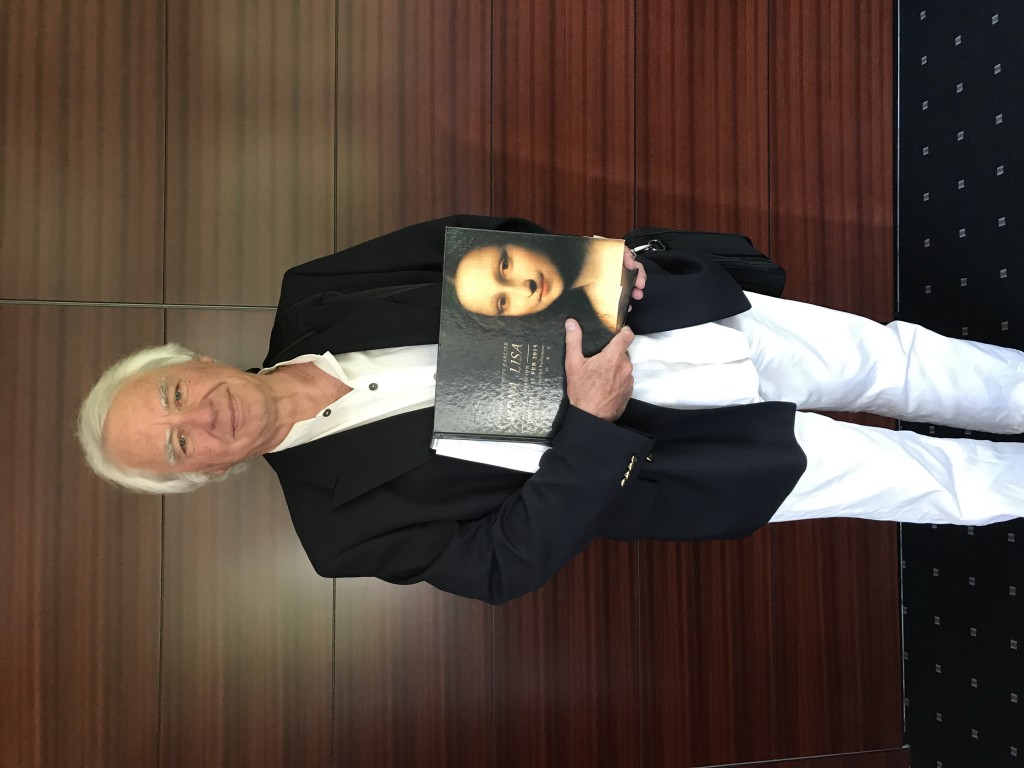Contributors
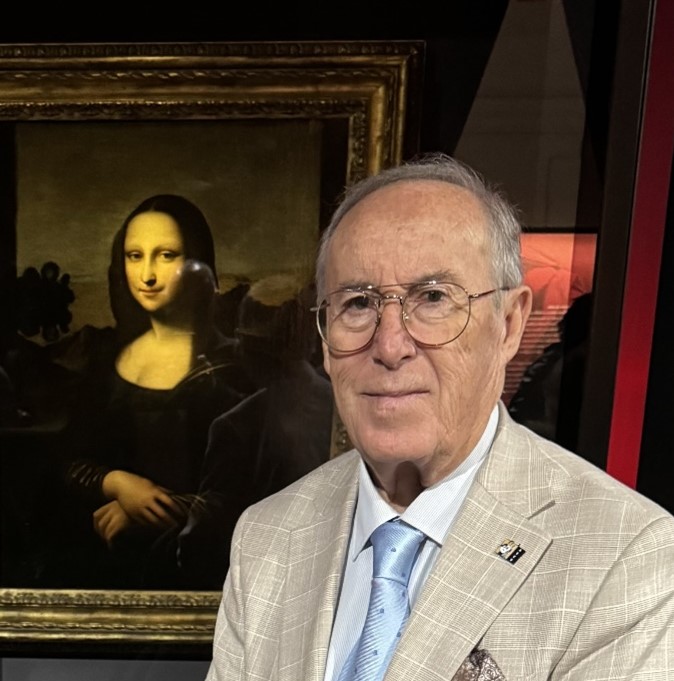
PR. MANUEL MARZAL ÁLVARO
Restorer of museum properties, President of the ACRACV and member of the Institute for Conservation
Restorer of the San Pio V Museum of Fine Arts in Valencia (España). He graduated from the San Carlos Faculty of Fine Arts in Valencia in 1976. He has received scholarships from different international Restoration Departments: National Gallery in London, Tate Gallery in London, The Courtauld Institute of Art in London, Hamilton Kerr Institute of the University of Cambridge, The Burrell Collection in Glasgow, Modern Gallery in Edinburgh, Hermitage Museum in St. Petersburg and others in Florence, Geneva and New York.
During his professional life as a Restaurateur, he has been responsible for various Official Departments of Valencia, such as the Corpus Christi Seminary College or the Royal Academy of Fine Arts of San Carlos. He was appointed Head of the Conservation and Restoration Service of Museum Assets of the Department of Culture, Education and Sports. He has served as Director of the Restoration Technical Center, dependent on the Museum of Fine Arts of Valencia. He is founder and President of the Association of Art Conservators and Restorers of the Valencian Community (ACRACV) and founder of the Spanish group of the international Institute for Conservation (Valencia GE-IIC). As a Senior Technician, he was in charge of the Department of Culture for the development and implementation of the Institute for the Restoration of Cultural Assets of the Valencian Community and was responsible for the design and installation of the Valencian Printing Museum.
He has been a collaborator of the Institute of Conservation and Restoration of Madrid (ICROA), member of the Commission for the study and development of the “Llei del Patrimoni Cultural Valencià” and of the Commission for the study of the INCUAL project of the Spanish Ministry of Culture, during the years 2003-2004.
His printed publications have focused mainly on the Restored Works in the Restoration Technical Center and the Restoration Department of the Museum of Fine Arts of Valencia, which enhanced the restoration in an extraordinary way. Likewise, through programs that defined the enrichment of the different collections, with editions such as: “Recovering our Heritage I and II”, “Restoration Notebooks I”, “We Recover Heritage No. 1-2-3-4”.
In 1998, he participated in the restoration of the Altarpiece of the Main Altar of the Cathedral of Valencia, a work commissioned by Pope Alexander VI when he was Bishop of Valencia. His twelve panels were painted by two disciples of Leonardo da Vinci: Fernando de los Llanos and Fernando Yáñez de la Almedina, who assisted him in his workshop during the time when Leonardo painted the portraits of Mona Lisa and the Battle of Anghiari.
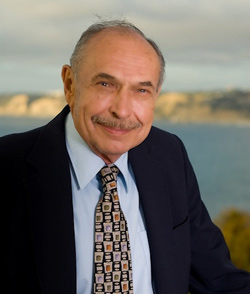
Pr. JOHN F. ASMUS
Research Physicist, Emeritus Professor, University of California, San Diego
Since the early 1970s, Professor John Asmus has been an authoritative Research Physicist at the Institute for Pure and Applied Physical Sciences, at the University of California, San Diego.
Prof. Asmus and his team developed specialized equipment to assist the city of Venice, Italy, in cleaning and restoring many of its invaluable marble statues. Through laser holography, and NDT (Non Destructive Testing), holographic interferograms could reveal hidden defects in artwork. New laser crystal equipment, employing a Nd:YAG, rather than a ruby, was developed and shipped to Venice with excellent results.
Based on some of this work, Prof. Asmus was approached to try and determine if any remains existed of Leonardo’s ‘Battle of Anghiari’ fresco under Vasari’s subsequent murals, in the Palazzo Vecchio in Florence. In 1976, he and his team designed, built and tested a 1 MHz ultrasonic digital imaging system with an automated stepping-motor-controlled transducer scanner, and the following year ultrasonically mapped the masonry strata beneath the Vasari paintings. After having located a 2m x 5m plane ‘island’, 7mm beneath the surface of the East wall, the project was turned over to a local ‘art diagnostician’. Coincidentally, in 1974, H. Travers Newton and John R. Spencer of the Williamstown Regional Art Conservation Laboratory, MA, and Duke University, NC, also began a search in the ‘Salone dei 500’ for relics of the ‘Battle of Anghiari’. Subsequent work by others has also been performed, but if anything remains of Leonardo’s extraordinary work, it is out of sight for the present. However, research on this subject continues to make headlines.
Armed with decades of experience in the science of art diagnostics, Prof. Asmus was commissioned to ‘clarify’ the Louvre ‘Mona Lisa’, to see what it could look like without cracks and the brown ‘smoggy atmosphere’. One of the discoveries made as a result of this test from the mid-1980s was that Leonardo had originally painted the female image with a necklace, and had subsequently painted it over. Ten years after first questioning the validity of the discovery, the Louvre’s own new X-rays confirmed the existence of the necklace. This is mentioned to reiterate the authority and professionalism of Prof. Asmus.
A few years later, Prof. Asmus performed an independent investigation of the ‘Isleworth Mona Lisa’, as the ‘Earlier Version’ was known at that time, and that is how the painting is referred to in his reports, which are presented in the foundation’s book.
Art Historian
Mr. Boudin de l’Arche was born on may 2nd 1945. Raised in Italy, he came back to his native country, France, to study law, political science and economics. Later he taught economics at “Sup de Co Marseille” (a French business school). He then undertook a professional in real estate in both France and the United States.
His interests then pushed him to explore two new avenues. First, theoretical physics on which he published three essays (Relativity dead end, 2009; A divine game of dice, 2010; and Up to the border of space and time, 2015). Second, he started exploring secrets and myths of history about which he published three other essays: In search of the Odyssey (2005); In search of Atlantis (2012); and, most recently, In search of monna Lisa (2017). He is currently working on The Gioconda revealed a follow-up to the previous to his most recent work.
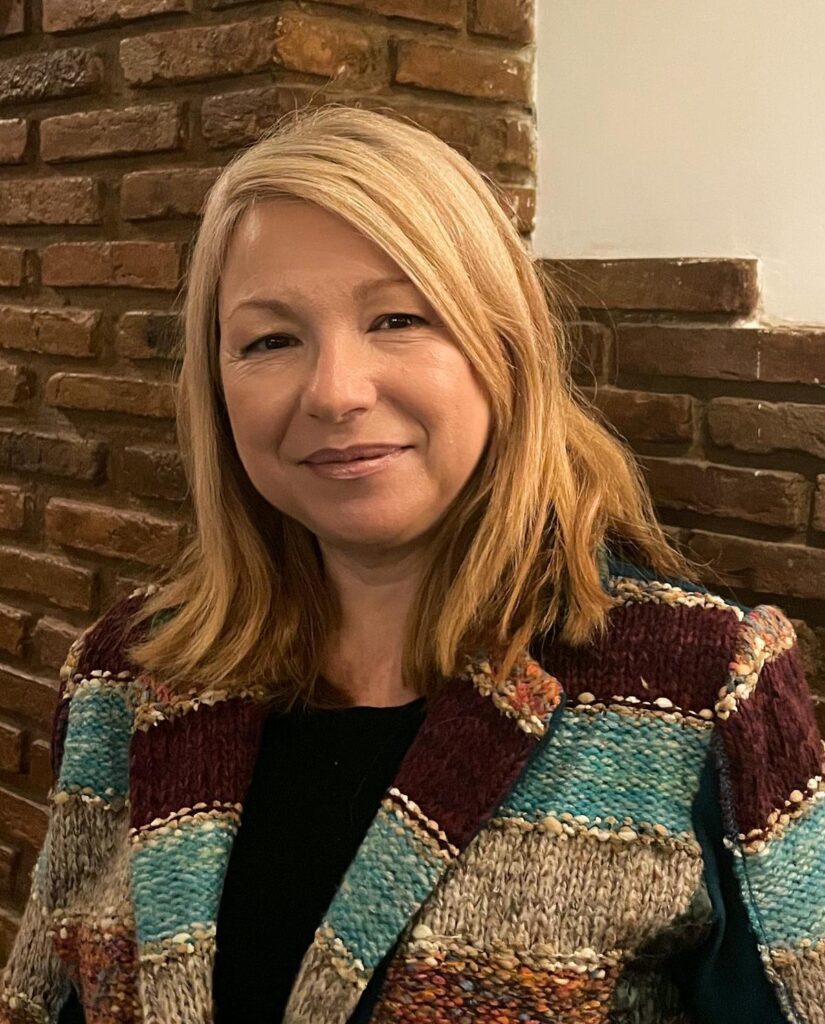 Pr. DOLORES GARCIA-RUIZ
Pr. DOLORES GARCIA-RUIZ
Art Historian
Dolores García Ruiz is a writer and researcher. She was born in Melilla (Spain) and lives in Valencia. She studied Law and is professionally dedicated to the Administration of Justice. She has given master classes in Literature at the Jaume I University of Castellón and is the author of several novels and essays. In 2012 she is part of the founding team of the Latin American cultural magazine Astrolabium.
In 2002, her first novel, The Secret of Monna Lisa, was a semifinalist for the 2002 “Primavera” Awards and became an international best-seller. In 2015, she rescued historical episodes in North Africa that influenced World War II from oblivion with The Sugar Queen. In 2016 she won the “Letras del Mediterráneo” award with the novel The Penelope’s rebellion.
In 2011 she published her first essay, The keys of Mona Lisa, which in 2012 was incorporated into the Louvre museum’s library for researchers. In 2017, with La Gioconda: a portrait in relief, she reveals that the most famous portrait in the world is three-dimensional. In 2018 she published the essay Leonardo, in relief: the perfection of the soul through painting. In 2020 she presents and publishes her research work Valencia and her silk art in La Gioconda at the Faculty of Geography and History of the University of Valencia. In 2021 she published the essay The Isleworth Mona Lisa: the answer to the riddle of the Mona Lisa.
Her research work on Leonardo da Vinci since 1999 has led her to be named “Melillense of the Year” in 2019 and considered one of the most knowledgeable connoisseurs of the brilliant Florentine. Currently, she chairs the Hispanomundial Union of Writers (UHE) in the Valencian Community and continues her career as a writer, prelector and literary proofreader.
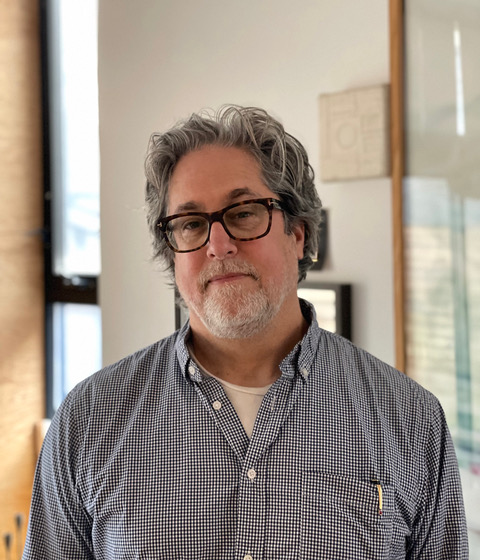 Pr. JASON HALTER
Pr. JASON HALTER
Art Historian
Professor Halter (Daniels Faculty of Architecture Landscape & Design, University of Toronto Academic, Architect, Art Historian) has been teaching and practicing architecture since the early 1990’s, having been involved with Italian Renaissance studies, earning degrees from the University of Manitoba (History ’88), University of Toronto (Architecture ’93), and as a Graduate Fellow with Syracuse University in Florence, Italy (Architecture History and Design ’95).
Halter has spent several years researching and teaching in Florence, Italy, where he has taught as an adjunct professor with the University of British Columbia and University of Toronto, coordinating and teaching courses to both undergraduate and graduate students, focusing on the history of architecture and art, and the emergence of the Florentine city-state of the 13th and 14th centuries. Through early studies in Classics, Roman and later history of the Byzantine Empire with Professor John Wortley (University of Manitoba), Halter has pursued research in political and social histories as well as art and cultural histories that culminated during his graduate Fellowship with Syracuse University, achieving scholarship and honour awards with both University of Toronto, and Syracuse University.
As protégé and later co-instructor with the preeminent Leon Batista Alberti scholar Hans-Karl Lücke (University of Toronto) in Florence (1991,1996-1998), Halter began a decades long study on the program of building patronage of 14th and 15th century Florence and has developed an unique perspective that began with the classical language of architecture of Renaissance Florence and Rome, synthesizing knowledge of building design and tectonics of construction methodologies up to the 20th century science of systems architecture.
Simultaneous to a dedicated study of the architecture of Renaissance Florence, Halter developed a keen interest in early Renaissance art history and the then, newly emerging production of art as a key element in the display of wealth, patronage, commercial persuasion and political powerbrokering that characterized quattrocento Florence.
Concurrent with Renaissance studies and teaching appointments, Halter has emerged as a leading expert in the contemporary field of modular architecture, a leading edge niche area within his profession that focuses on the science of building, efficiencies of materials science, economics of building systems, and the advancement of prefabricated construction methods. Along with his passion for the life and practice of Leonardo da Vinci, Halter has focused his study of Leonardo Da Vinci as ‘Scientist’, who crafted a sublime language of communication, illustration and painting, noting his achievements as perhaps the inventor of the modern scientific method of observation, experimentation and innovation in his published writing.
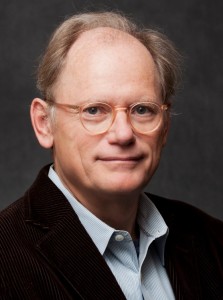 Pr. JEAN-PIERRE ISBOUTS
Pr. JEAN-PIERRE ISBOUTS
Graduate Professor, Fielding Graduate University
Professor Isbouts is a European-born art historian known for his best-selling publications on art and biblical archaeology, published by National Geographic. Born in Holland in 1954, he studied ancient Greek and Latin before continuing his graduate studies in 16th century Italian art at Leiden University. He emigrated to the United States in 1979 to pursue his doctoral research at Columbia University in New York.
He is the author of numerous books, articles and documentaries on art and archaeology, including the 1993 publication of The Renaissance of Florence, which was subsequently translated in seven languages, including Japanese. In 2007, National Geographic Society published his book The Biblical World, an in-depth survey of the art, literature and cultural milieu of the Near East during the genesis of biblical narratives. The book rapidly became an international bestseller, and has since been followed by two other National Geographic books written by Dr. Isbouts.
In 2013, Dr. Isbouts and Dr. Christopher Heath Brown co-authored a book entitled “The Mona Lisa Myth,” aimed at establishing a chronology of both the Early Version and the Louvre version of the Mona Lisa as autograph works by Leonardo, within the context of Leonardo’s late oeuvre and early Cinquecento art. The book is currently scheduled for publication in December, 2013.
Dr. Isbouts is graduate professor in several PhD programs at Fielding Graduate University in Santa Barbara, CA (www.fielding.edu). His website is www.jpisbouts.org.
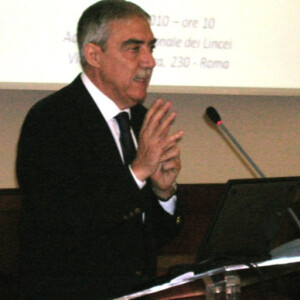 Pr. SALVATORE LORUSSO
Pr. SALVATORE LORUSSO
Art conservationist and historian
Professor Lorusso is a former full Professor of the University of Bologna.
He is Foreign Member of the Russian Academy of Natural Sciences; Emeritus Professor of the Cultural Heritage Institute of Zhejiang University, China; former Visiting Professor of the Academy of Social Science of Zhejiang University, China; Visiting Professor of the Faculty of Arts, Lomonosov Moscow State University, Russia; former Vice-president and now, a Councilor of the Società Italiana per il Progresso delle Scienze (SIPS-established in 1839). Direttore Generale of the Accademia della Cultura Enogastronomica.
His biography appears in the 2016 Marquis Edition of Who’s Who in the World. He is the founder and director of two book series relating to the specific issues pertaining to the sector of cultural and environmental heritage. He is the author of over 430 publications in national and international journals and of 22 volumes and monographs covering commodity science, cultural heritage and environment. In 1997, he founded the Diagnostic Laboratory for Cultural Heritage at the Ravenna Campus of the University of Bologna and remained head of the Laboratory for eighteen years. His scientific work deals mainly with the study of the “system-artifact-environment-biota” and diagnostic, analytical, technical and economic evaluation within the context of the protection and valorization of cultural and environmental heritage.
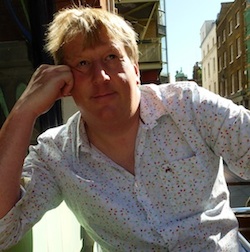 ROBERT MEYRICK
ROBERT MEYRICK
Head of the School of Art at Aberystwyth University’s School of Art and Keeper of the School of Art Museum
Robert Meyrick is Head of the School of Art at Aberystwyth University’s School of Art and Keeper of the School of Art Museum. He trained in fine art and art history and now writes on 20th-century British art, the history of printmaking, and the visual culture of Wales. Through building and working with collections and archives at Aberystwyth, often working closely with the artists themselves or their heirs, his research involves original investigation and improved insights into the work of lesser known British artists and collectors. In 2001 he was invited to become an Honorary Fellow of the in ‘recognition of his services to the art of printmaking in Britain’. Robert’s research is disseminated though the publication of books, catalogues raisonné and articles, as well as curated exhibitions.
Robert has staged exhibitions for museums and galleries throughout the UK. His retrospective exhibition of paintings by the Welsh artist Christopher Williams was shown at the National Library of Wales throughout this Summer and his exhibition of prints by Sydney Lee RA can be seen at the Royal Academy of Arts in London next Spring. In addition to his numerous monographs, he has regularly contributed chapters for books, journals and catalogues. He has toured exhibitions of paintings by Hugh Blaker and published widely on Blaker’s activities as artist, advisor and collector, most notably his 2004 article for the Oxford University Press Journal of the History of Collections – ‘Hugh Blaker: Doing his Bit for the Moderns’.
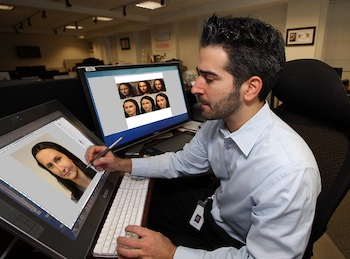 JOE MULLINS
JOE MULLINS
Forensic Imaging Specialist
Joe Mullins is one of the world’s foremost Forensic Imaging Specialists, and is based in Washington D.C. Mr. Mullins has a degree in Fine Art from the Savannah College of Art & Design, and a degree in Fine Art and Graphic Design from James Madison University. He has received extensive training in this specialization, including in Advanced Facial Reconstruction at the University of Oklahoma, in Digital Facial Reconstruction at the University of Dundee, Scotland, and in Forensic Facial Imaging at the headquarters of the Federal Bureau of Investigations, Quantico, VA. Mr. Mullins currently does consulting work for the F.B.I. and other law enforcement agencies; and he teaches Facial Reconstruction at the New York Academy of Art; at George Mason University, Fairfax, VA, and at the Art League., Alexandria, VA. He is the author of the article on ‘Age Progression and Regression’, in the newly published book ‘Craniofacial Identification’.
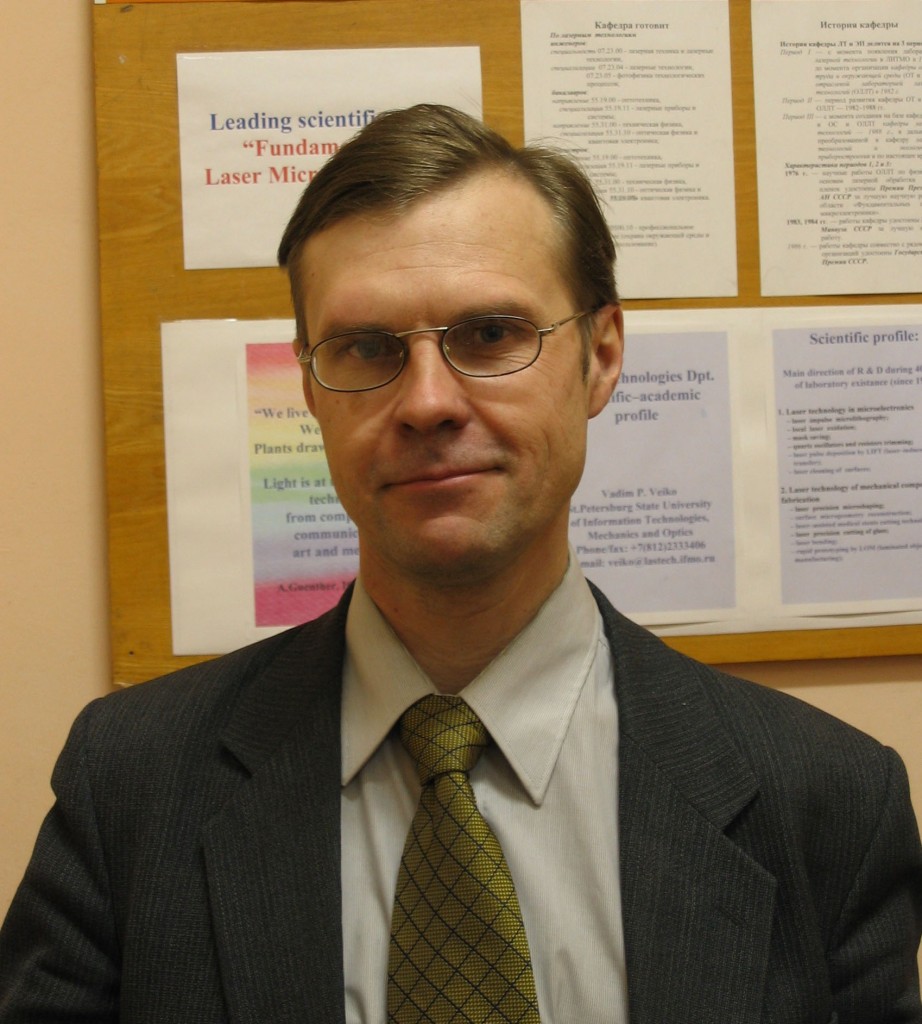 Pr. VADIM PARFENOV
Pr. VADIM PARFENOV
Full Professor, St.Petersburg State Electrotechnical University
Professor Parfenov was born in St.Petersburg on August 12, 1962. He graduated from Peter The Great St.Petersburg Polytechnic University (ex M.I.Kalinin Leningrad Polytechnic Institute) in 1985. He received his PhD degree in 2002 (speciality – “Quantum electronics”) and academic degree Doctor of Technical Science (habil. of PhD) in 2019 (speciality – “Optics”). In 1985-2007 he worked at the Research Center “S.I.Vavilov State Optical Institute” (SOI), where he was involved in research and development of solid-state lasers for various applications (including holography and interferometry). His knowledge and experience cover many areas of modern laser physics and optics including phase conjugation, non-linear optics, wavefront sensing, interferometry and laser material processing. While he worked at the SOI, he also taught students in his role as part-time Associate Professor at several state universities in St.Petersburg. In 2008 he was appointed to the permanent position of Associate Professor at St.Petersburg Electrotechnical University, and starting from October, 2019 he became Full Professor of the same university.
For the past 16 years his research work was focused on the use of laser and opto-electronic techniques in Cultural Heritage preservation. He pioneered the practical use of laser cleaning technology in artworks conservation in St.Petersburg, where he has had numerous collaborative works with leading museums including The Hermitage museum, The State Russian museum, The museum-preserve “Tsarskoye Selo”, The museum-preserve “Peterhof” and The St.Petersburg State museum of Urban Sculpture. He has also collaborated with The State Tretyakov Gallery in Moscow in the use of 3D laser scanning for documentation and replication of artworks. He was the first to introduce the non-contact replication of out-door monuments in Russia based on combined use of 3D laser scanning and CNC milling. In 2010 he established the project on replication of marble sculpture “Primavera” (of XVIII century, Italy) at the museum-preserve “Tsarskoye Selo”. It was the first case study of non-contact replication of stone sculptures in Russia.
For last 10 years fields of expertise Prof. Parfenov concerned with CH preservation have expanded and now include also analysis of paintings. In the framework of collaboration with St.Petersburg Academy of Fine Arts he studies tempera and oil paintings using X-ray fluorescence spectroscopy. Furthermore, he collaborates with Prof. John Asmus with the University of California using image processing techniques for analysis of oil paintings. These studies included analyses of painting “Earlier Mona Lisa” and other masterpieces created by Leonardo as well as also analysis of self-portraits by Rembrandt.
Prof. Parfenov has been involved in numerous conferences and seminars since 1985, both in Russia and abroad. He organized and co-chaired several conferences and workshops such as: “Light for Artworks conservation” (2006, 2010 and 2012, St.Petersburg) and “Laser Cleaning and Artworks Conservation” (2007 and 2013, St.Petersburg). In 2005-2006 he was a member of the Management Committee of the European Union COST Action G7 “Artwork Conservation by Laser”. In 2014 he became the member of the Permanent Scientific Committee of LACONA (Lasers for Artwork Conservation).
He is author of over 330 publications including numerous scientific papers in peer-reviewed journals and 16 books.
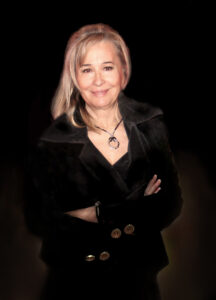
DR. MARÍA GÓMEZ RODRIGO
Lecturer of Art History, University of Valencia, Spain. Art restorer-researcher and painter-sculptor
Her city: Zaragoza, Spain. She began her studies at the Royal Academy of Fine Arts of San Luis, Zaragoza. She worked as a graphic designer/draughtsman.
In 1990, she graduated with a degree in Fine Arts from the Faculty of San Carlos, Valencia, specializing in the Conservation-Restoration of Works of Art. She was awarded a scholarship by the Regional Ministry of Culture for a Doctorate degree in 1990, having obtained the highest grades in her specialty.
She has taught Art History at the University of Valencia, and in 1993, she established the Art Laboratory at the Faculty of Geography and History of the same university, teaching Artistic Techniques and Scientific Research of Works of Art. She has been a lecturer in Master’s programs related to research in artistic heritage until her retirement in 2021. Currently, she gives master classes at the Postgraduate level.
She conducts expert reports on heritage; notably: “The Plundering of the Royal Monastery of Sijena in the Civil War of 1936”, revealing the most significant art theft in Spain. This expert report was crucial in court. It has national and international interest.
Her specialty in the recovery of severely burned paintings was the subject of her Doctoral Thesis. Considered an international expert in this field, as reflected in her books and scientific publications, the University of Valencia offered her collaboration to the French Ministry during the Notre Dame fire.
Recent awards: Honorary Academician (AICTEH), International Academy of Science, Technology, Education, and Humanities (2022); Recognition by the Professional Association of Doctors of the Valencian Community (2023) for the Recovery of Burned Valencian Heritage. She is a member of both institutions. She has been the Technical Manager of the Movable Heritage of the Valencia Cathedral since 1996.
Secretary of the Mona Lisa Association Spain, under the Mona Lisa Foundation, Zurich, Switzerland. Her passion: An expressionist painter/sculptor with numerous institutional exhibitions. Her latest work: a copy of the Mona Lisa, delving into Leonardo’s exquisite technique.
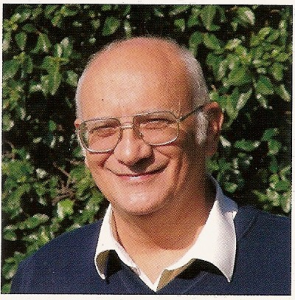
ING. ALFONSO RUBINO
Engineer
Alfonso Rubino was born in Mesagne (Brindisi) January 7, 1946. He lived 18 years in Lecce. Since 1965, he lives in Padova. He graduated in Civil Engineering at the University of Padua, and has worked in public and private institutions dealing with water projects and major infrastructure.
Passionate about graphology, he has discovered a mathematical paradigm that explains the process of pattern recognition and writing. These studies resulted in the physical-mathematical concept of energy-harmonic geometric shapes. The discovery that shape is in fact a new kind of energy independent of space-time has led to further research in the field of geometry applied to architecture and works of art.
He has come to the conclusion that many ancient monuments and many works of art, when brought to the rules of geometry, are iconograms that resonate with harmonic energy. In 2008 he published a book with Roberto Mosca entitled “The Triple Cinta”, where he developed, in terms of ancient sacred geometry, the study of certain symbols, artifacts and architecture of the city of Osimo (Ancona).
The geometry of the beauty in the paintings of Leonardo da Vinci is the development and application of the theory of harmonic Vitruvian man to his works.
Alfonso Rubino has held numerous conferences and seminars since 1995 both in Italy and abroad (France, Spain, Georgia). In 2006 he was invited by the Italian Embassy in Tbilisi-Georgia at the local university to produce a report on the paleo-Christian Armenian church of the first centuries.
The author has studied and published, mostly on the internet, sacred geometrical patterns of many monuments and works of art.
Alfonso Rubino – [email protected]
Assistant Alfonso Rubino for communications-Luca Solimeo – [email protected]
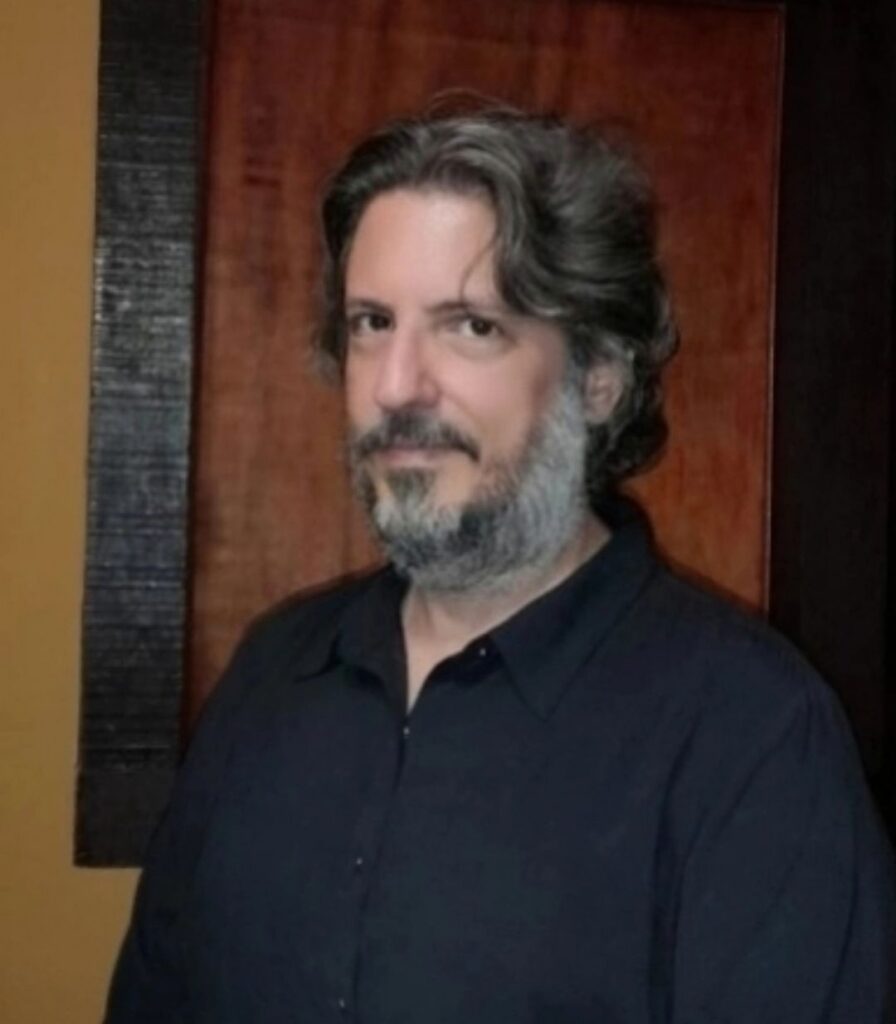
Pr. ÁTILA SOARES DA COSTA FILHO
Archaeology and Heritage Expert, Designer and Professor in Art History
Professor Soares da Costa Filho is perhaps the only scholar in Latin America to have significantly researched the ‘Isleworth Mona Lisa‘ (by Leonardo da Vinci), and has written numerous articles on this subject, in many languages. Born in Rio de Janeiro, Átila Soares graduated from the Industrial Design program at the Pontifical Catholic University (PUC-Rio). He then obtained postgraduate titles on History, Archaeology, Heritage, Philosophy, Sociology, Art History and Anthropology combined with his teaching in higher education, and its connection with research and production of text material.
His primary methodology aims to understand the whole process of the creation of societies based on anthropological issues that are eternal to the human condition. Among some analyses he has already performed on the authenticity of works of art in private collections, we can highlight those attributed to Leonardo da Vinci, Rafael, Pieter Bruegel, El Greco, Liotard and Goya.
Soares has also made findings as developed thoughts on the Shroud of Turin and its connections with some of Da Vinci works. Other theories by him regard the Leonardesque pattern of faces that has the Mona Lisa of Isleworth as a model, the secret behind Da Vinci’s inverse writing and the approach of this artist to the philosophy of Heraclitus of Ephesus. In addition, he has created an unprecedented theory about the Essenian-Gnostic inspirations in the person and work of the Renaissance painter Sandro Botticelli, as he developed and released an elucidating study about the contemporary-like design of pre-Columbian Art.
In 2013 he released ‘A Jovem Mona Lisa’, the first book to discuss this painting by an independent author, and it is unique for being not published in the English language. In 2016 he released his second book, ‘Leonardo and the Shroud’, and also participated as co-author in three more books. Some of the leading media that have already published signed, related stories and interviews granted by Átila Soares includes the ‘National Geographic’, ‘Microsoft’, the ‘Wikipedia’, ‘Yahoo!’, ‘Il Giorno’ (one of Italy’s newspapers leader) and the ‘Aleteia’ (the largest global Catholic news agency). In 2021 he conducts an experiment and reconstructs what would be the true face of Virgin Mary – a news story that goes around the world, turning into one of the most prominent topics on technology and/or Christianity subjects in 100 countries plus so far.
Soares is also part of the Scientific Committee in the ‘Fondazione Leonardo da Vinci’ (Milan) as in the ‘Comitato Nazionale per la Valorizzazione dei Beni Storici, Culturali e Ambientali’ (Rome). Currently, he is involved in the development of Artificial Intelligence technology directed at attribution functions for works of Art.

Albert Sauteur
Artiste Peintre
Albert Sauteur, born 1950 and living in Switzerland is a painter and is recently credited with the theory of binocular perspective.
Starting off as a teacher, he later devoted himself since 1990 entirely to painting and the study of vision related to painting and painters. During his observations, he soon realized that the perspective in art from the Renaissance till today does not properly reflect what someone is seeing exactly. He thus reinvented the science of perspective and first publicized his work at a conference on “Discoveries” in Paris in 2011.
Later that year at OMPI (World Organisation of Intellectual Property), Geneva he heard about The Earlier Mona Lisa which fascinated him greatly as he believed that Leonardo Da Vinci was one of the few if not unique artists that understood binocular perspective and reflected it his later work. The fact that there is a difference in the spacing of Mona Lisa’s eyes when comparing the earlier version with the Louvre version is not just a sign that one is not copied from the other, but the ten years difference in their executions reflects Leonardo’s evolving realization of the binocular perspective.
Professor Sauteur is currently refining his work using Leonardo’s two Mona Lisas as a core to his presentations. His work is growing in recognition. It was recently published in the Swiss Migros journal which has one of the largest circulations in the country and is currently the invited speaker for a number of conferences on the subject of vision and perspective.
For more information please visit his website www.albertsauteur.ch
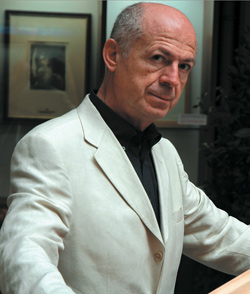
ALESSANDRO VEZZOSI
Director of the Museo Ideale Leonardo Da Vinci
Alessandro Vezzosi stands not only as one of the most influential living experts on Leonardo da Vinci, but arguably also the most credible current authority on the subject of Mona Lisa.
Though born in Florence in 1950, his family is originally from Vinci, in Tuscany, the birthplace of Leonardo, where he currently resides. From 1993 he has managed the Museo Ideale Leonardo Da Vinci, along with the nascent ‘Garden of Leonardo and of Utopia’.
Art critic, ‘Leonardist’, expert on interdisciplinary studies and creative museology, he is also the author of hundreds of exhibits, publications and conferences, in Italy and abroad (from the United States to Japan) on Leonardo Da Vinci and the Renaissance, contemporary art and design. He recently organised and curated major exhibitions in the USA and Japan on the theme of Mona Lisa.
Amongst others, he was the first scholar from the Armand Hammer Centre for Leonardo Studies from the University of California in Los Angeles, directed by Carlo Pedretti; he taught at the University of Progetto in Reggio Emilia; and he is the honorary Professor at the Academy of Arts and Design of Florence.
He began as an artist from 1964 to 1971 winning more than 50 prizes in painting competitions. In the Seventies he was the founder of the Leonardisimi Archives and of ‘memory-instruments of the region’; he coordinated ‘Art Chronicle’ and he was the historical-artistic consultant of the Comune of Vinci; he collaborated on the publication on Vinci; the life and paintings of Leonardo; and modern art.
